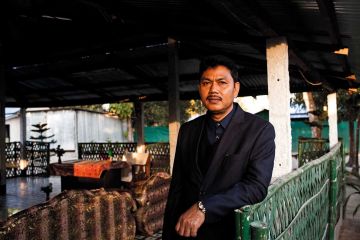
In the 1830s, a new
age began in the European colonies: the period of indenture, or debt bondage.
Thousands of Indians left the shores of their home country in what was called
kala pani, literally black waters, to work on plantations in Mauritius, Jamaica,
Fiji, Guyana, Surinam, and Trinidad, to name a few.
In 1903, a young woman
called Sujaria sailed from Calcutta on an indenture ship called The Clyde,
joining thousands of other Indian “coolies” to work on sugar plantations in
Brit





